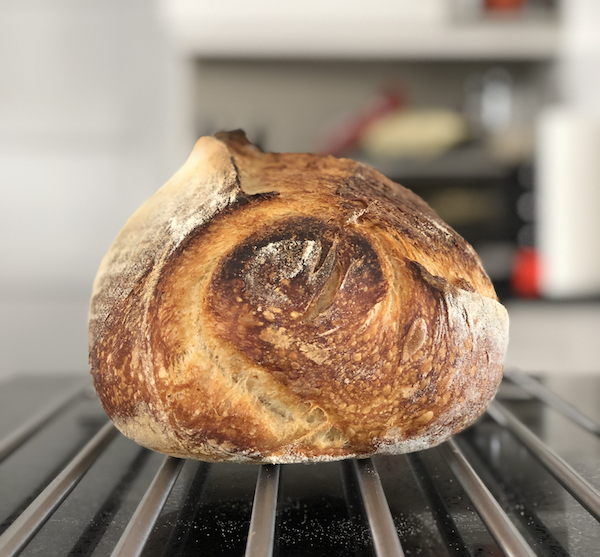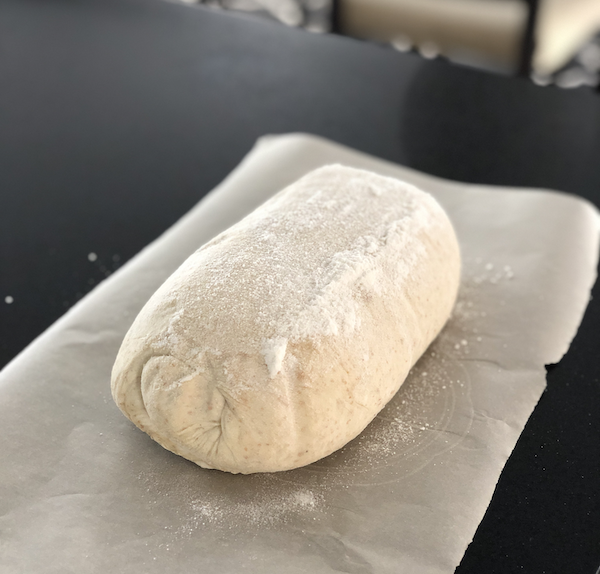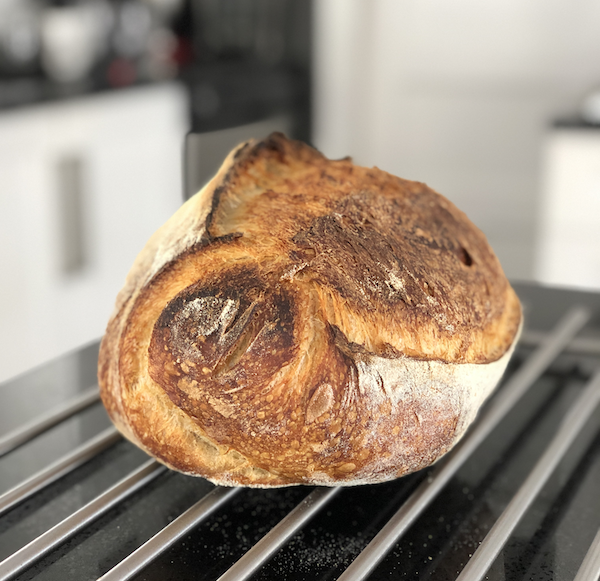
FINALLY! Oven spring!

I am just ecstatic. I never thought baking bread would be such a roller coaster ride. As some of you may remember, I have had a heck of a time trying to achieve oven spring with my sourdough bread. See this and this thread if interested.
With the direct help of the fine people who offered advice and/or suggestions on here, and many others who have shared their knowledge in past threads I uncovered with the search, I have FINALLY baked a loaf of bread that I am proud of. Another big help, has been the very detailed videos put out by Tom of "The Sourdough Journey". The wealth of information he shares has been invaluable to me. Two things in particular: 1) The activity curve of bulk fermentation and 2) The importance of understanding starter feeding ratios. Check out his videos, there is ton of information on his channel.
I have been trying to make this recipe since I started sourdough in October. For this last loaf, I changed two things. I spent a week carefully feeding my starter to build up its strength through 1:2:2, 1:3:3 and 1:5:5 feedings with 10% rye, 90% bread flour. Time became noticeably shorter and shorter. I also wanted to do a lot 1:5:5 feedings to eliminate any thiols if they were present. (I cannot confirm if I had any before, but something was happening to my gluten structure.) The starter now LOOKS different in the jar, it makes big pronounced bubbles on the jar walls that remain well after the starter starts to collapse down. Before, they would disappear quickly after it has peaked. I also made sure never to allow the starter to drop all the way back down, ensuring to always feed the starter soon after the dome has started to drop.
The second thing I changed, was dropping the water in the recipe by 50g. I had tried this before and still got poor results, so I'm not sure I can attribute the oven spring / dough strength to this. I will find out next time, when I try the same recipe with the correct hydration.
But I have to say, the dough felt completely different, right from the get go. By the time the dough had reached 30% size increase, it felt puffy and easy to handle. So again, I'm thinking it has more to do with what the starter is doing to the dough rather than simply a lower hydration. But of course, I could be wrong.
Also, using the spice jar trick to monitor bulk fermentation has helped tremendously. It's impossible for me to gauge 30-40% by eye in a bowl. But in the spice jar, it's clear as day.
Anyways, when I opened the lid of the dutch oven this morning, my eyes popped out of my head. The result is a dramatic improvement from basically every sourdough attempt I've made prior. I'm very happy. Now I need to work on my shaping, because it kind of looks like a large pig in a blanket. :D
Thank you all for helping me along this journey.





You knocked it out of the park !! Love the spiral shape. I think you did it perfectly. I would reproduce it a few times without changing anything. It's best to have reproducible results. Gives a good foundation for further exploration. Congratulations. c
That's a good point. Thanks!
Congratulations. Amazing the euphoria that a simple loaf of bread can produce. Be sure to post a photo of the crumb when you slice the loaf.
Ted
Incredible high, especially after all of the failures.
I have to say, looks like fool's crumb to me, but I'll take it. I got much more even, open crumb in some of my previous attempts, but I'm not going to nitpick this now. I will work to improve it.
Thanks! :)
Those larger holes on the right side are in the outer band of your rolled up dough, and I suspect that they relate more to your shaping than to Fool's Crumb.
Good to know! I will work on that!
That's awesome. I'm thrilled to see you enjoying this!
Thank you! :)
Really happy for you Mark, I know you almost gave up a few times and I’m happy that you stuck with it. Baking with sourdough is such a huge challenge it is easy to get discouraged early on. I will agree that the loaf doesn’t show fool’s crumb but some minor issues with air trapped during stretches and shaping. A bit of gentle patting down of your dough as your shape can solve that if those larger alveoli bother you. But well done!
Benny
I wouldn't say that they bother me really, I just thought it could be a bit more uniform. But I'm definitely very happy. Thanks for your tips along the way. The aliquot jar tip really helped me. There was no way I could gauge 30-40% by eye without it.
Mark, I stumbled on to this post and am so glad that I did. Thank you for pointing out the very useful videos from Tom Cucuzza! I've been binging them since. I especially found the activity curve during bulk ferment that you pointed out very enlightening.
Your loaf looks gorgeous!
Glad to be of some help. Tom is a very detailed individual, I wonder if he's not an engineer. With only a few videos, I got a much better understanding of why recipes/processes are constructed the way they are. Even the cold retard etc...
Happy baking!
No wonder his presentation of data just speaks to me. Thanks to you, Tom's videos, and Benito's frequent encouragement to other bakers here to use an aliquot jar, I had a fantastic bake yesterday. Separate post coming..
Happy baking!
GrinChaser
Great to hear. Nothing like seeing a big fat loaf in the oven. :)
Amazing and gorgeous loaf with great open crumb. Thanks very much for posting and sharing the tips.
"The Rye Baker" recommends feeding rye starters at 1:10:10 which seems crazy high, but might work, given enough time to work on all that new flour.
Thanks!
I've never tried 1:10:10, and I have never worked with straight rye. With my flour blend, and my temperature, I would expect a 1:10:10 starter to take 24 hours to peak. Let us know how it goes!
Here's what the 100% rye starter fed at 1:10:10 looks like after 13 hrs at 72-80 F (in the oven with the light on, until it got to 80 F).
Rye Starter 13 hrs in to a 1:10:10 feedingrk
Bubbles on the bottom, but almost no growth. Maybe we'll see more activity at the 24 hr mark (which would be a convenient time to build a levain) for an evening mix and bake.
24 hrs into a 1:10:10 refresh feeding (recommended by "The Rye Baker" of my 100% rye starter; photos at the link below
24 hrs in to 1:10:10 Rye Refresh Feeding
Pretty much no change in the last 12 hrs. I turned the oven light off as the temp was around 80 F. This morning the oven temp was about 71 F. It looks as if this starter needs a temp closer to 80 F to make any progress. The book says 10-12 hrs at 68-72 F and it should triple in volume. Nope. Or maybe it was just really weak to begin with and needs another 24-48 hr to rebuild.